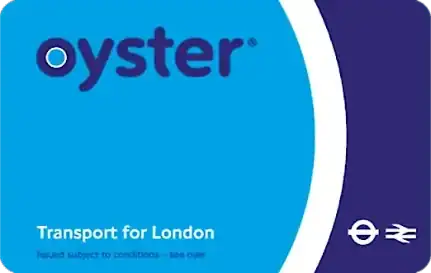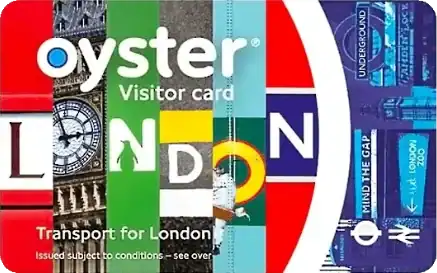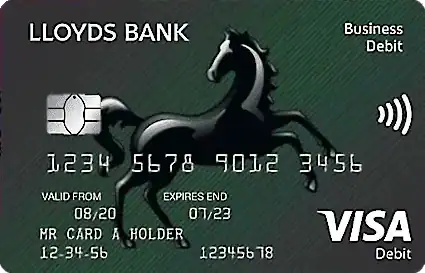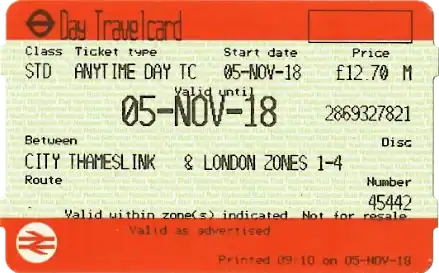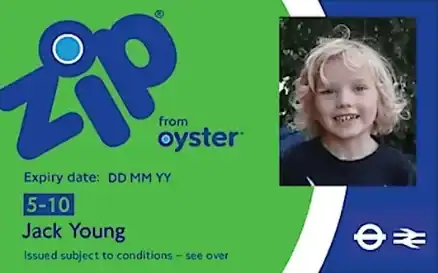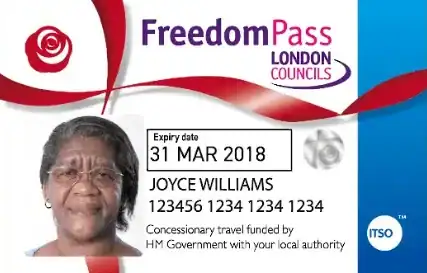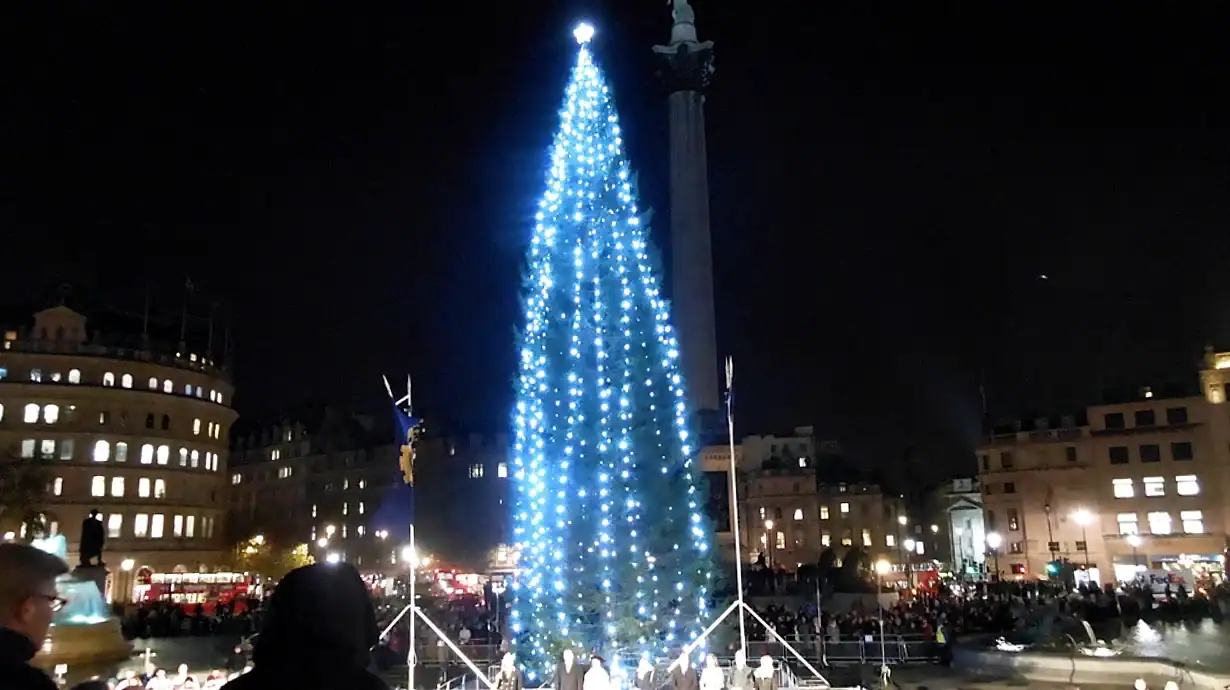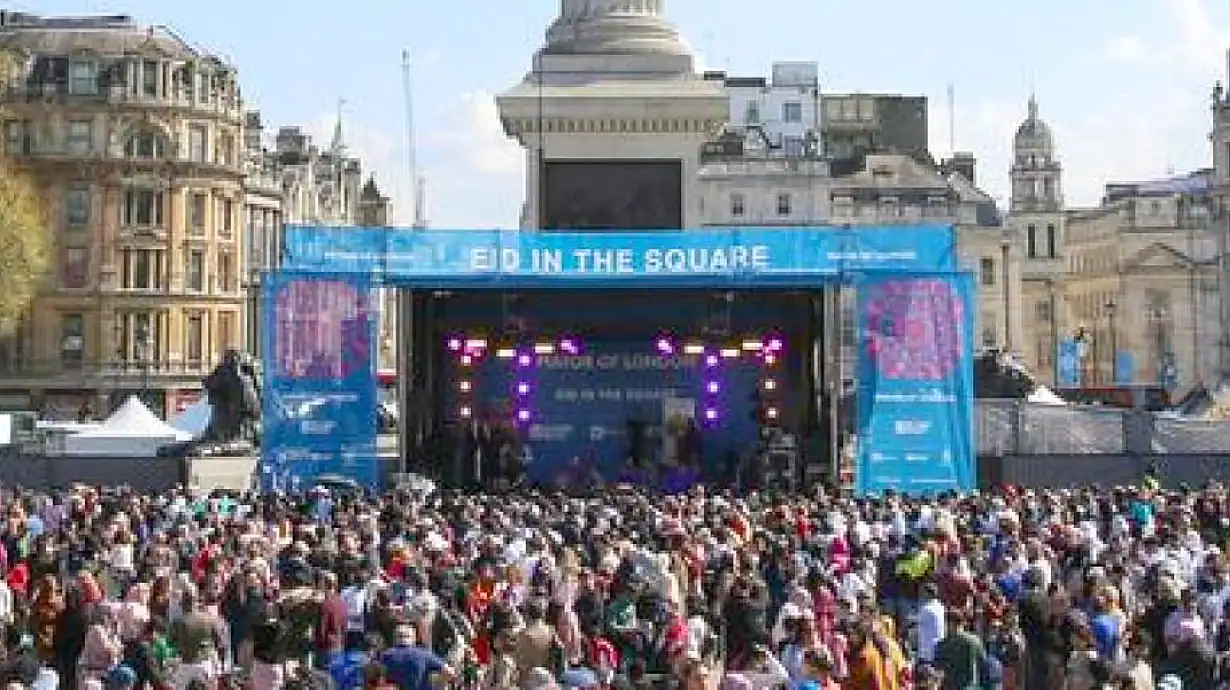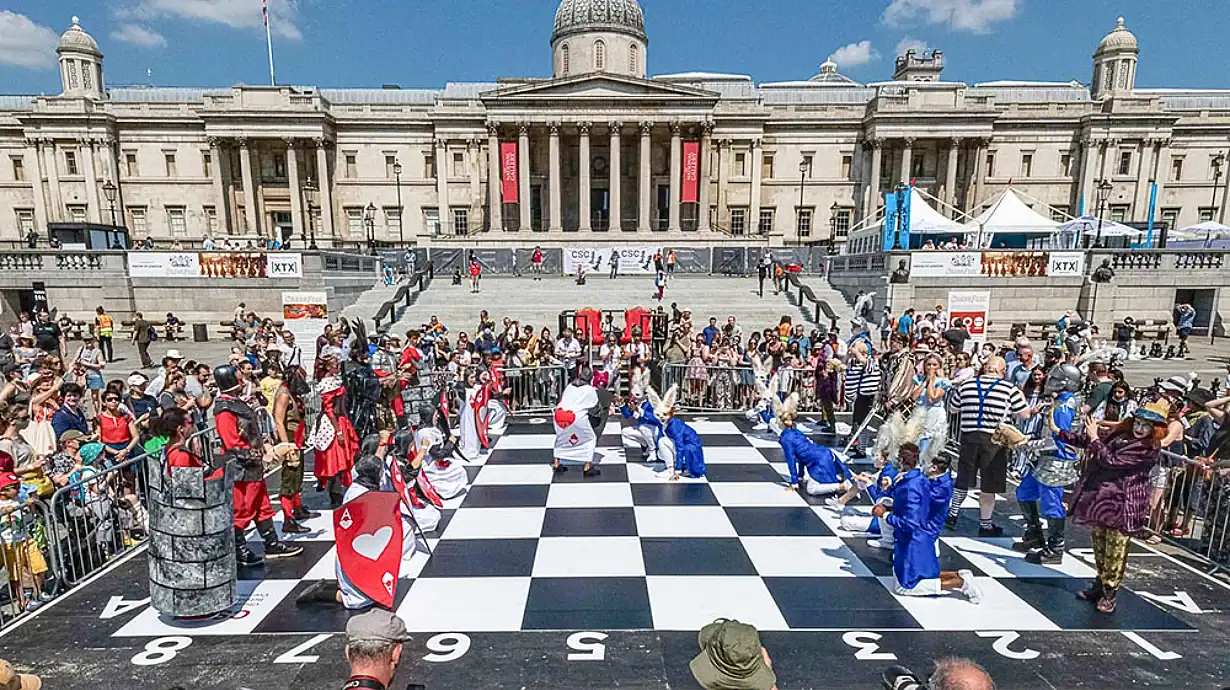I must have stared into these fountains a million times but I’ve never once thought to chuck a coin in the water and make a wish – I’m going to give it a go this morning. Presumably the bigger the fountain the bigger the wish, so imagine what I can achieve with 10p. If all of those protestors who came here complaining about the Poll Tax just clubbed together and chucked in a few thousand pounds then they could have wished for whatever they wanted.
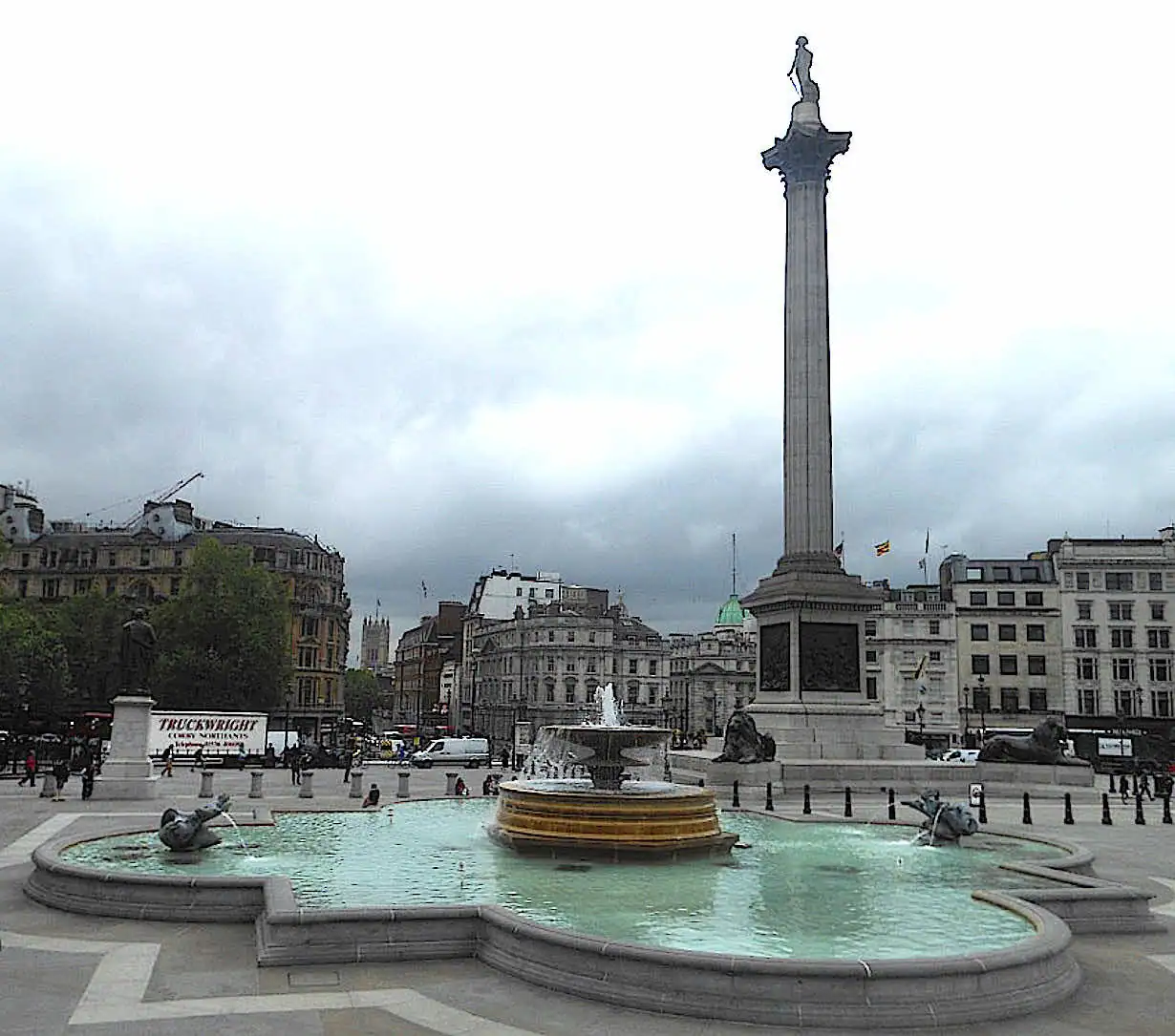 Photo: londondrum.com
Photo: londondrum.com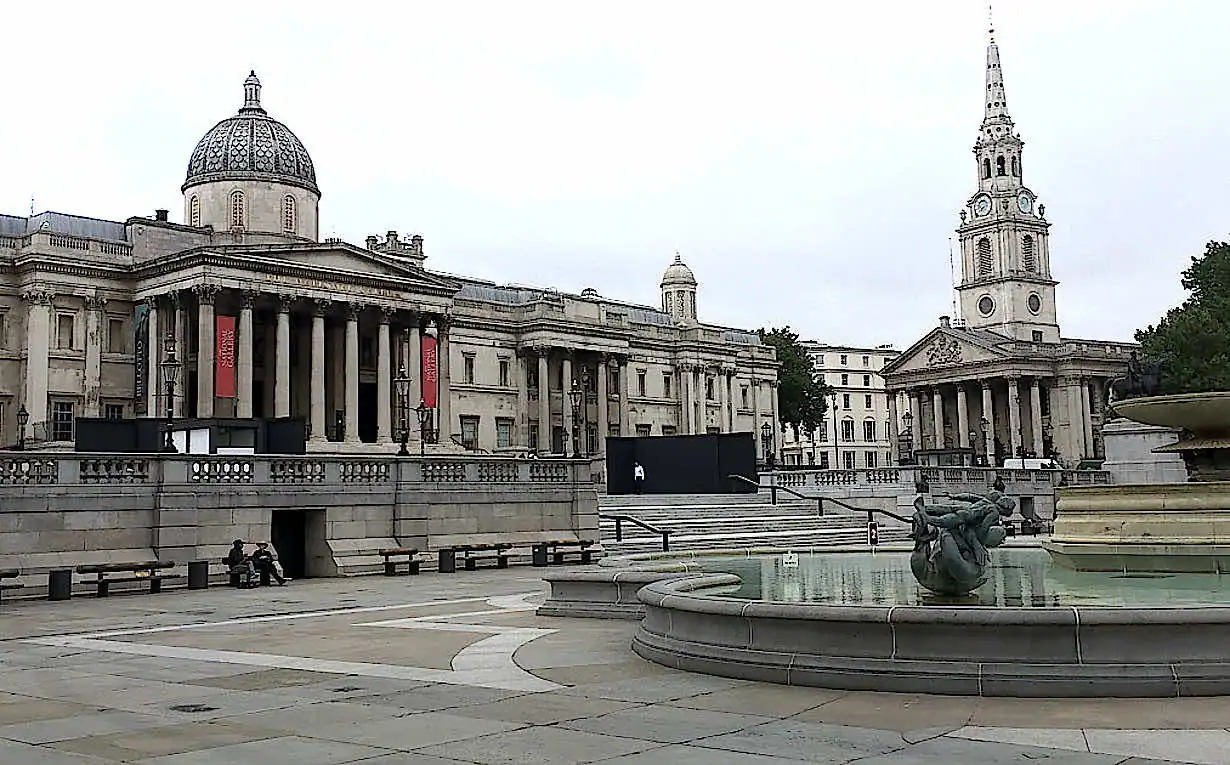 Photo: londondrum.com
Photo: londondrum.comFor hundreds of years this patch of land stood at the northern end of Whitehall Palace and the king used it as his mews (where he kept all his horses, hawks and carriages). In the early 1820s George IV moved the Royal Mews to Buckingham Palace and within twenty years it was totally transformed. They built Trafalgar Square, the National Gallery, Nelson’s Column, all the plinths, the fountains, practically the whole lot was put in place by 1845.
And that’s when the protesters moved in.
Political protests and demonstrations
Almost from the very start the public saw it as a great place to congregate and demonstrate and it’s been like that ever since. Nowadays whenever they want to rage against the government they erect some scaffolding by the stairs and stand there shaking homemade placards and banners shouting Save the planet! Stop the war! Ban the bomb! It’s all Margaret Thatcher’s fault!
As I’m writing this today, for example, I’m surrounded by a few thousand Extinction Rebellion protestors. Chalk pictures are going down on the pavement saying we’ve got a week to save the rainforests while people are weaving rainbow-coloured wheelbarrows around the crowd with fluorescent yellow flags and overflowing piles of cardboard signs for people to grab.
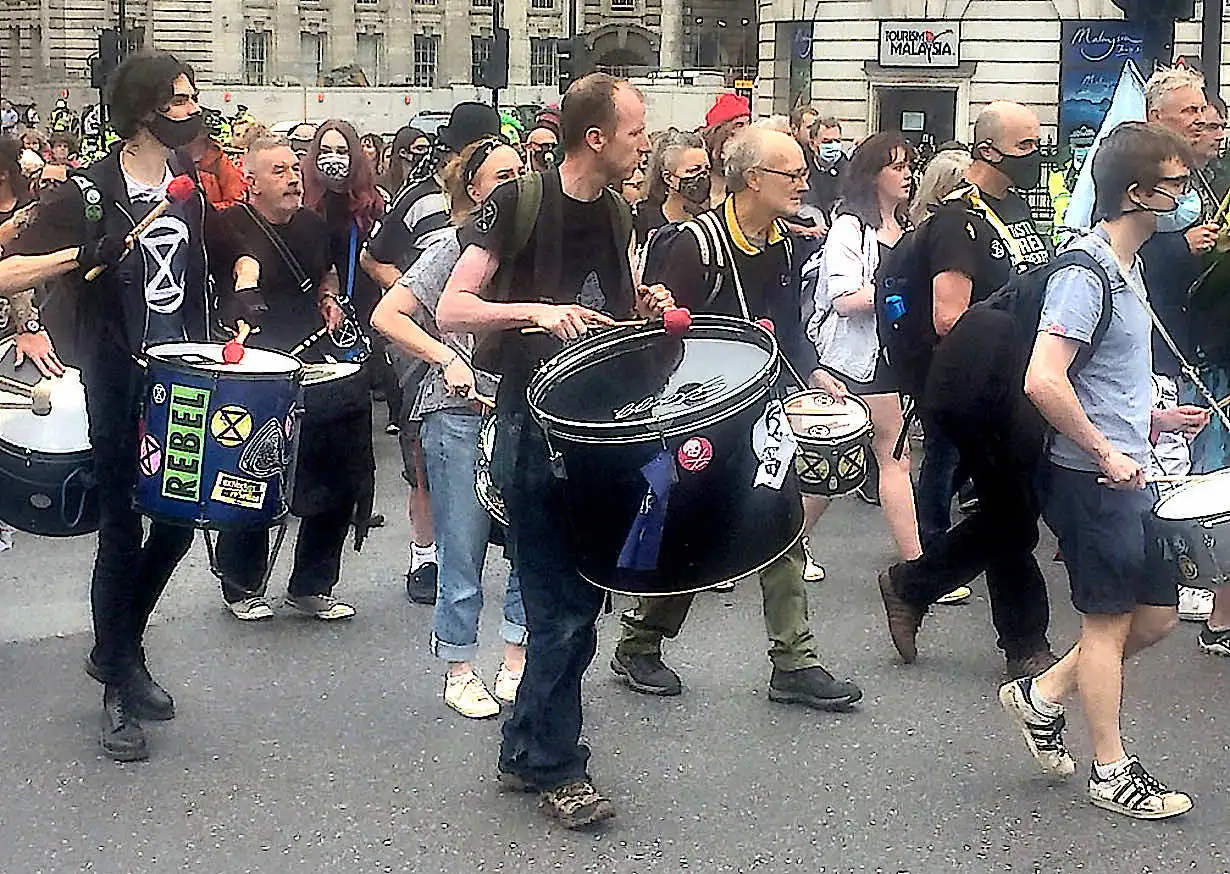 Photo: londondrum.com
Photo: londondrum.com Photo: londondrum.com
Photo: londondrum.comEverybody seems to be carrying a rolled-up sleeping bag and armfuls of bent tent poles and it’s like a military staging point… one guy’s shouting out slogans whilst the police are drowning out the drums with sirens and helicopters turning circles in the sky.
Back in the 19th-century they didn’t have all of these disco lights and sub-woofer speakers so they made their case with boots and bricks through the windows and the authorities had the bright idea of building those two huge fountains – that’s partly why they’re there, not to make wishes in, but to reduce the amount of space available for the crowd to congregate.
London’s smallest police station
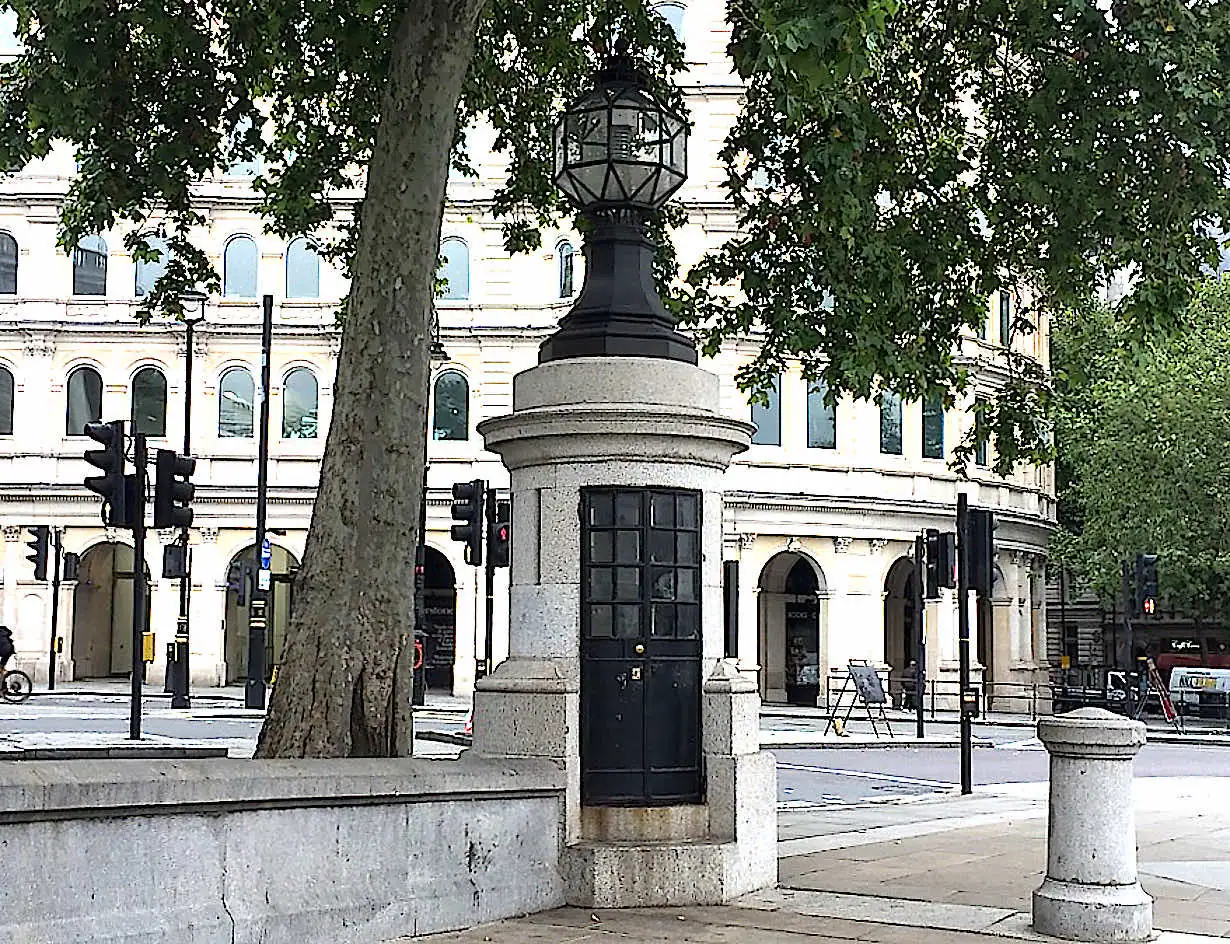 Photo: londondrum.com
Photo: londondrum.comAfter a while the police decided that they needed a more permanent presence so they hollowed out one of the big lamppost plinths on the southeast corner and installed a wooden chair and telephone (and probably a kettle as well), rigged up a big white light on top so they could call for aid when things got out of hand, and you can still see this tiny little police box today (it’s got a black door at the front) – except now it’s a broom cupboard for the council cleaners.
Trafalgar Square pigeons
If you were around in the 1980s then you can probably remember when Trafalgar Square was full of pigeons. And I don’t mean just a few pigeons, I mean all of the pigeons – every pigeon in London used to live here and it was one of the city’s big attractions. They even had a caravan in the corner selling polystyrene cups of bird seed.
This is how it used to work: first of all we’d scatter some seeds around our feet (or on top of our head, if we were feeling extremely brave) and then we’d do a big grin for our parents as the pigeons started flocking over. At this point it was still a bit of fun and we’d be laughing as we sprinkled some more seed on the palm of our hand. Then the fear would set in as more and more pigeons came flapping and scrapping and barging the other birds off our arms trying to snatch up all the food.
We’d be standing completely still with our arm bones locked into position like the branches of a tree, hoping not to annoy them, but at this point we’d no longer be smiling inside. We might still have a fixed rictus grin on our face but trust me, that was just for our dad’s camera. On the inside we were freaking out. By the time they’d flown away our arms would be shredded and hanging with flapping bits of skin.
When the Mayor of London came along in 2001 he decided to wage a health and safety war against the pigeons and promptly banned that caravan in the corner. He even brought in a huge industrial vacuum cleaner to suck the seed off the street and hired a Harris hawk to patrol the skies like a fighter jet. (If you come early enough on a weekday morning then you can still see it doing loops around the rooftops as it gets exercised by a falconer.)
Charles I statue in the centre of London
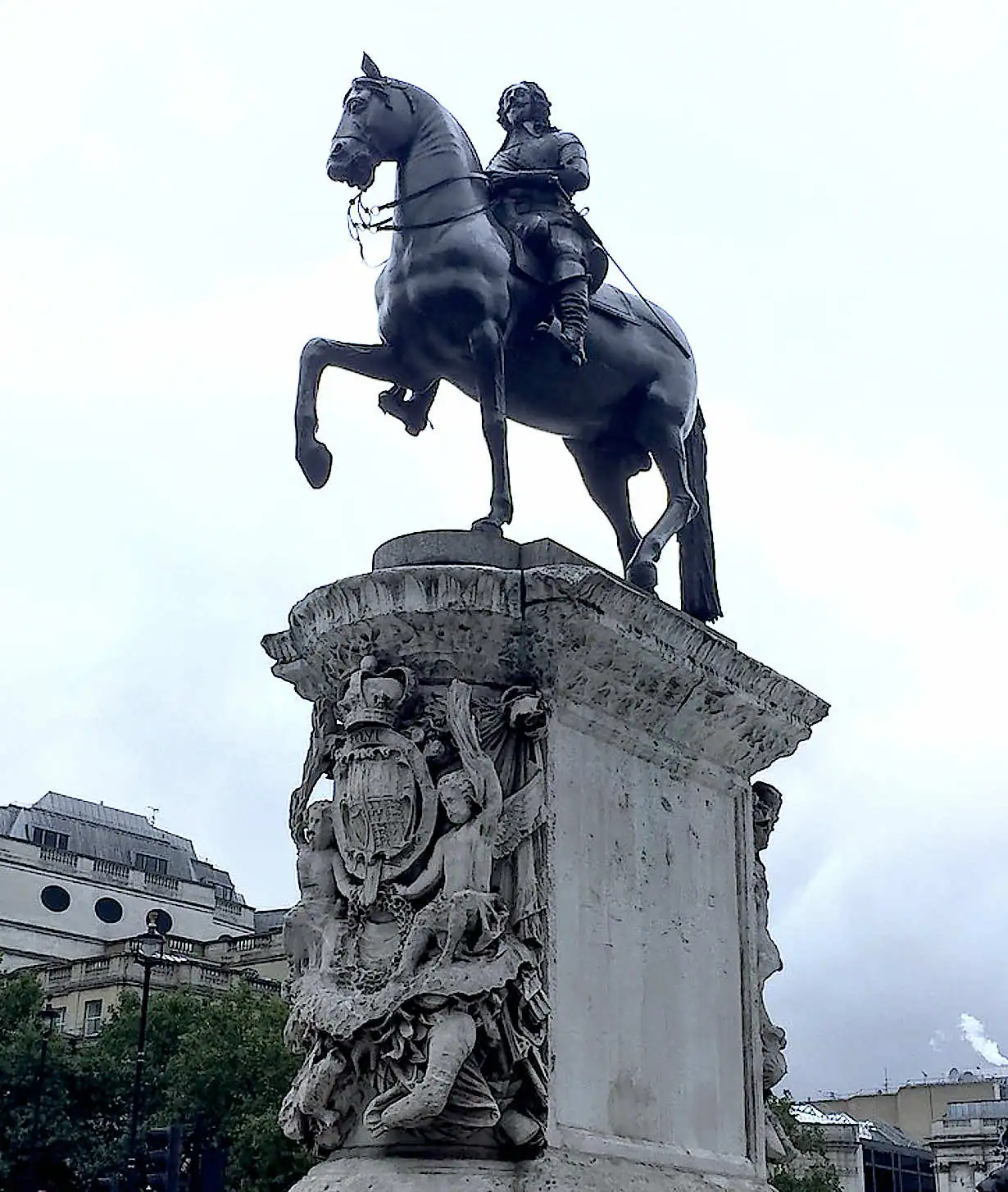 Photo: londondrum.com
Photo: londondrum.comIf you go and stand by that big statue of Charles I on the south-side of the square then you’ll be standing in the very centre of London because that’s where they measure all the distances from.
You have to be a bit of a military historian to recognise the other statues – nobody’s heard of General Sir Charles James Napier and Major General Sir Henry Havelock nowadays.
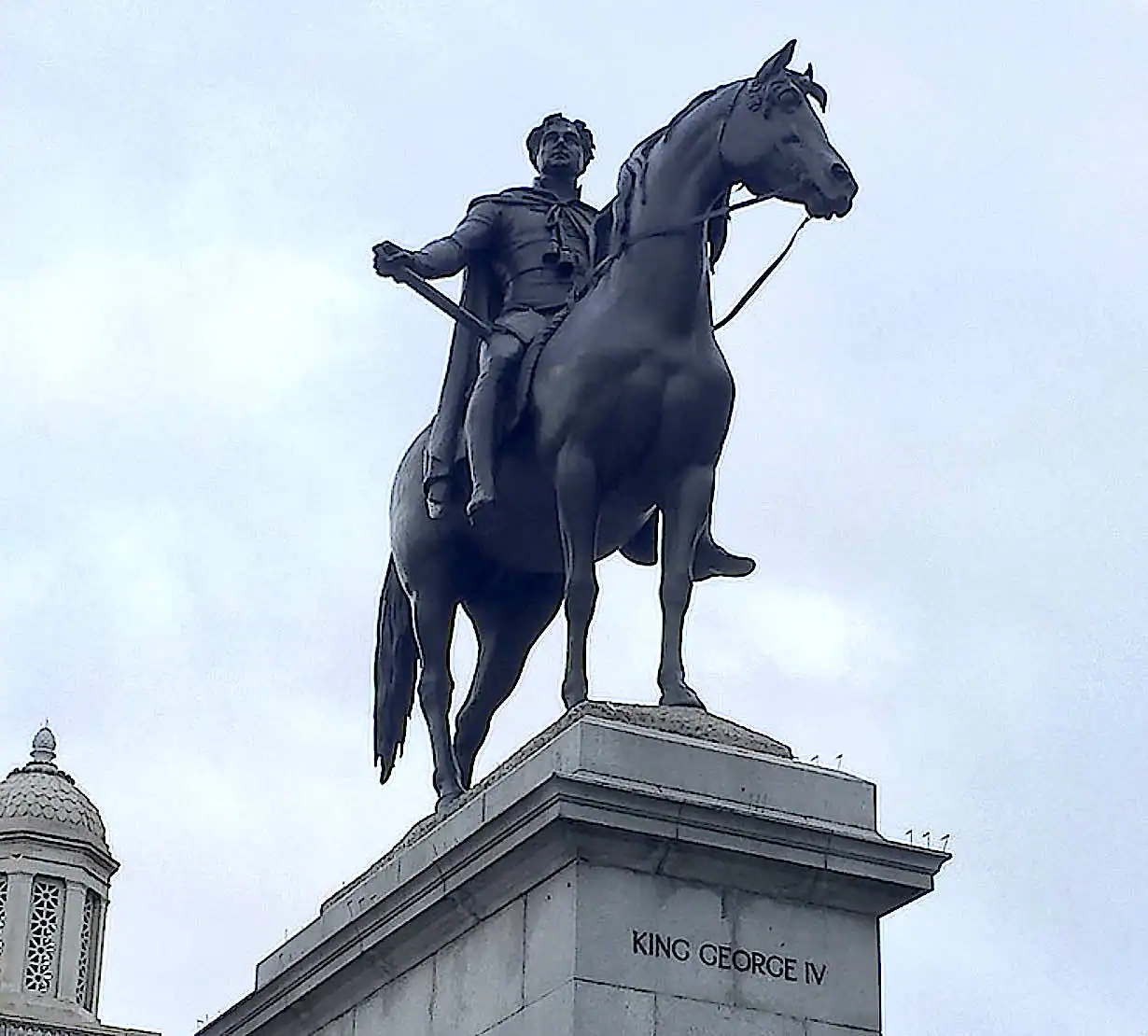 Photo: londondrum.com
Photo: londondrum.comThe northeast corner has one of George IV that was originally destined for the top of Marble Arch until they shifted it from the front of Buckingham Palace to the tail end of Oxford Street, so he ended up here instead.
The fourth plinth artwork commission
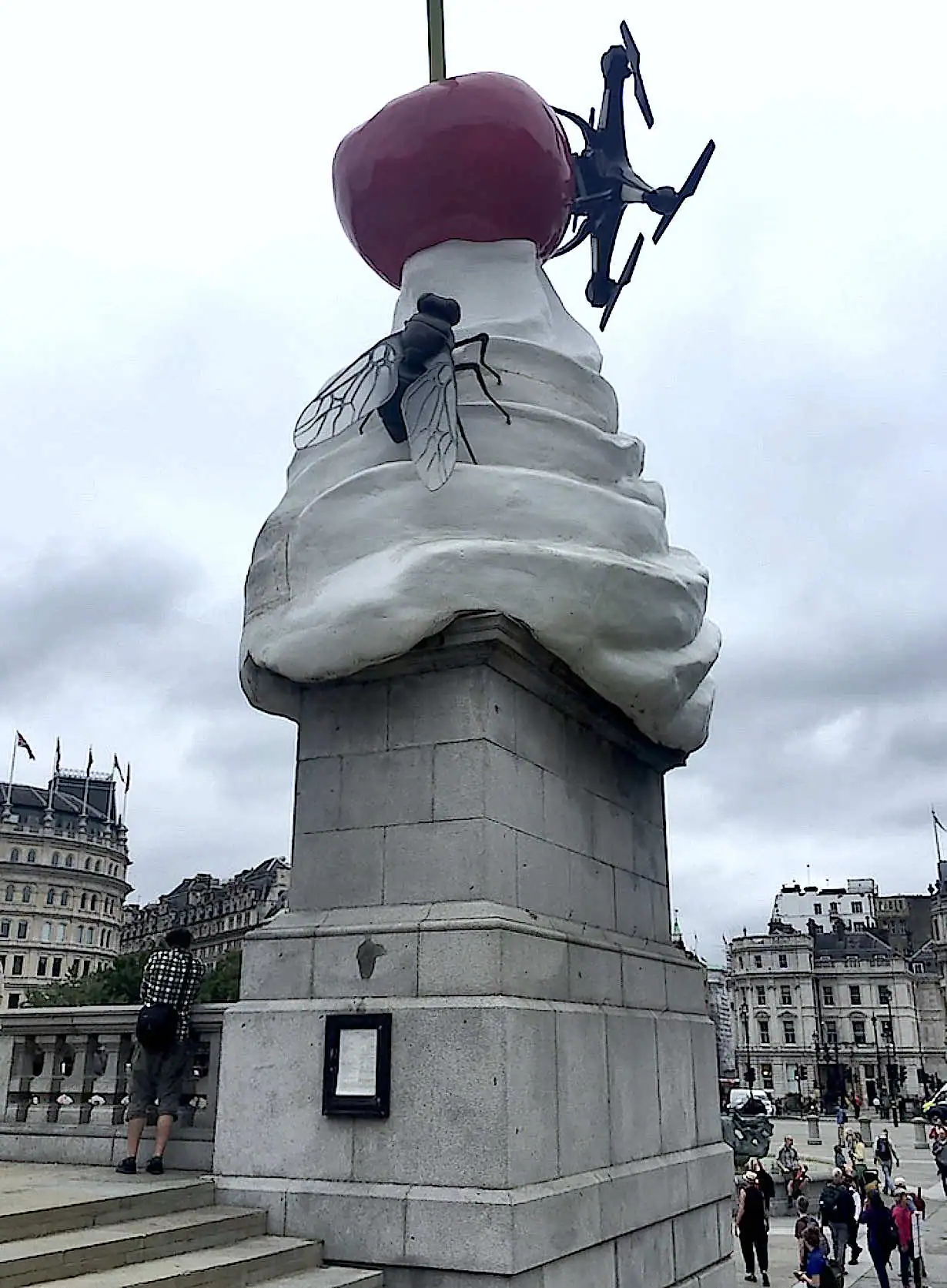 Photo: londondrum.com
Photo: londondrum.comThat empty plinth in the northwest corner is supposedly being reserved for an equestrian statue of Queen Elizabeth II, but until that day comes they’ve decided to subject us to a series of contemporary artworks which have been changing every 12-18 months for the last ten years.
At the time of writing it’s a melting ice cream cone with robot flies buzzing around the top, but in the past they’ve had everything from a giant thumbs-up to someone dressed up as Where’s Wally?
I also recommend… If you enjoy this then try Covent Garden (you can walk it in 7 mins); Leicester Square (you can walk it in 4 mins) and Piccadilly Circus (you can walk it in 6 mins). Trafalgar Square is home to Nelson’s Column, the National Gallery, National Portrait Gallery and St. Martin-in-the-Fields. I’ve also written a review of the Trafalgar Square Christmas Tree ceremony
How to get to Trafalgar Square
| Fare zone | Cash | Oyster & Contactless | Travelcard | ||||
|---|---|---|---|---|---|---|---|
| Single fare | Single fare | Daily cap | One day | ||||
| Peak | Off-peak | Peak | Off-peak | Anytime | Off-peak | ||
| Bus (all zones) | n/a | £1.75 | £5.25 | £6 | |||
| Train (zone 1) | £7 | £2.90 | £2.80 | £8.90 | £8.90 | £16.60(zone 1-4) | £16.60(zone 1-6) |
| Train (zone 1-2) | £7 | £3.50 | £2.90 | £8.90 | £8.90 | ||
| Train (zone 1-3) | £7 | £3.80 | £3.10 | £10.50 | £10.50 | ||
| Train (zone 1-4) | £7 | £4.60 | £3.40 | £12.80 | £12.80 | ||
| Train (zone 1-5) | £7 | £5.20 | £3.60 | £15.30 | £15.30 | £23.60(zone 1-6) | |
| Train (zone 1-6) | £7 | £5.80* | £3.80* | £16.30 | £16.30 | ||
| * Journeys between zone 1 and Heathrow are always charged at the peak rate. Prices are correct as of | |||||||
Related articles and events
Search for parades in London, parades today, tomorrow, this weekend and during April and May, or see what’s on near Trafalgar Square
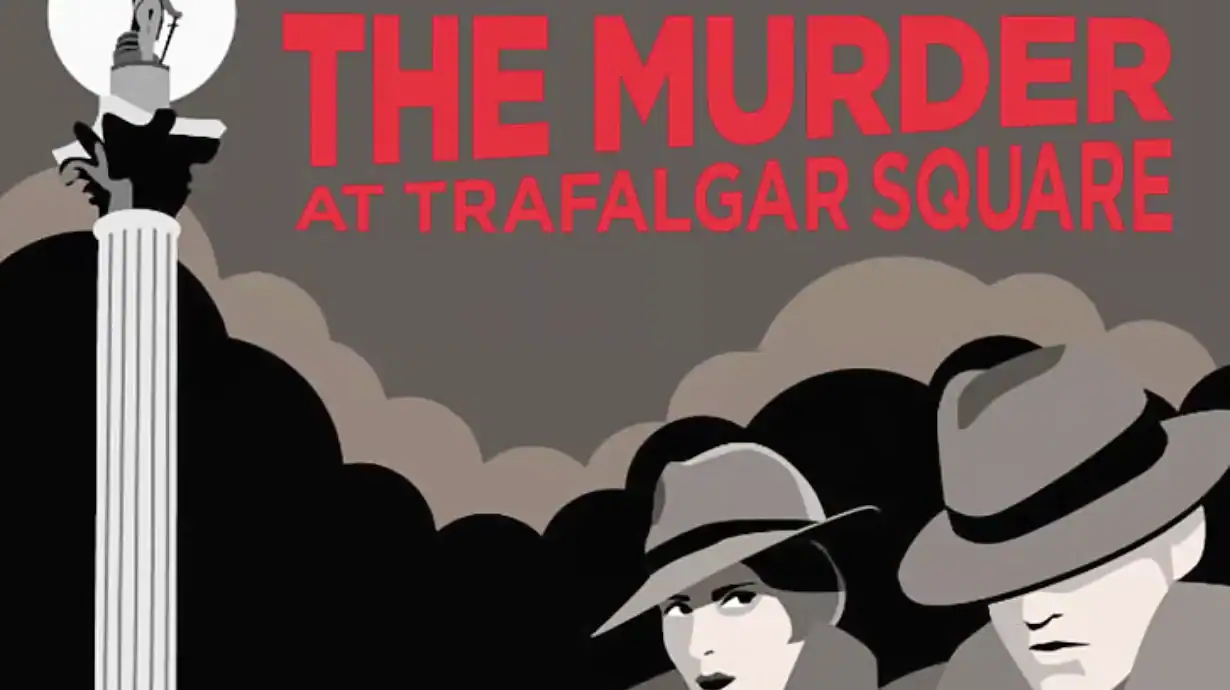
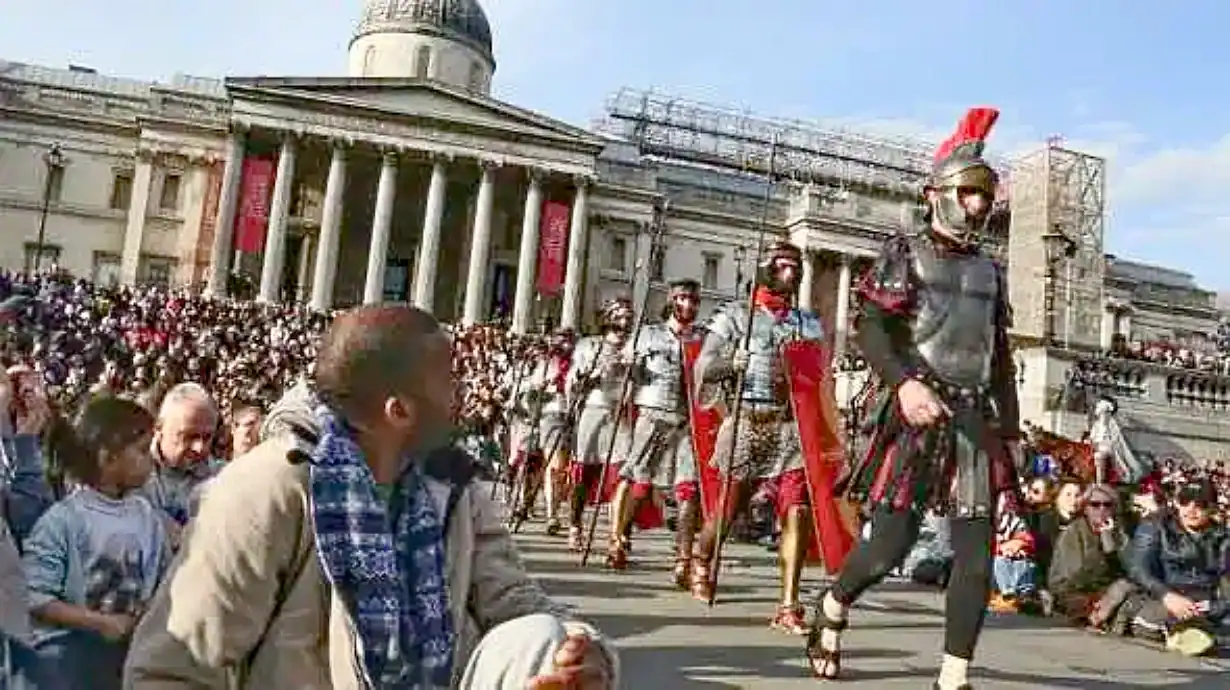

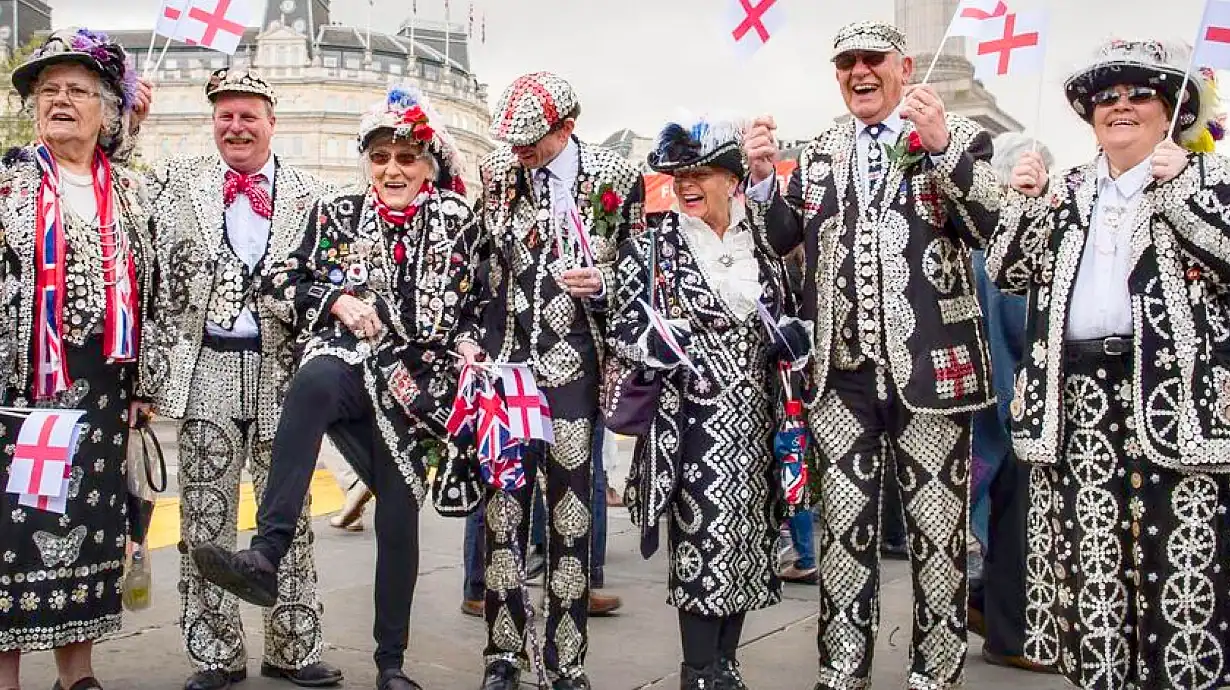
 Twitter
Twitter Facebook
Facebook Bluesky
Bluesky WhatsApp
WhatsApp Email
Email

